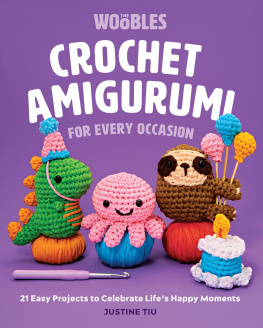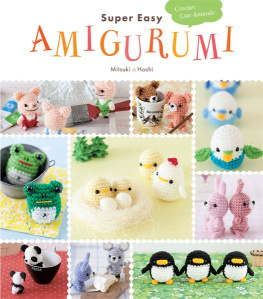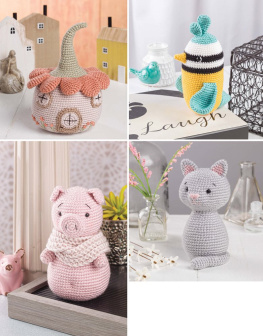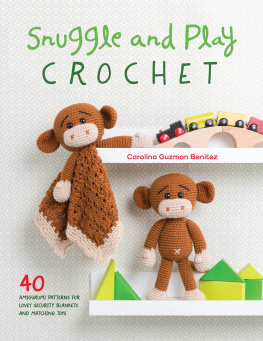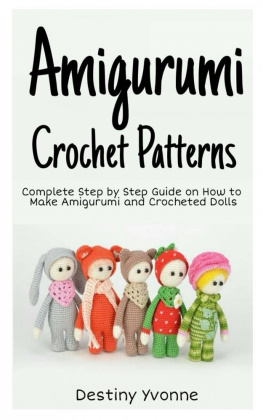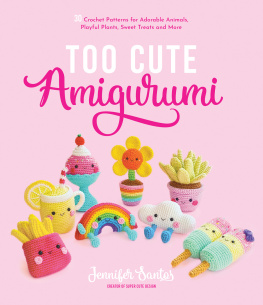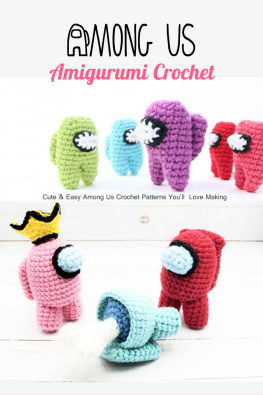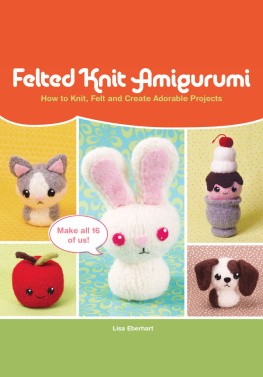Contents
Guide
KAWAII CROCHET
40 Super Cute Crochet Patterns for Adorable Amigurumi
Melissa Bradley
CONTENTS
INTRODUCTION
Like so many, watching my grandmother crochet is my earliest memory of being intrigued by this beautiful fiber art. I received many lovely crochet gifts from her over the years, but sadly we lived too far apart for her to teach me. So one determined day (I was a teenager at this point) I decided that I would teach myself. I went to my local craft store and bought a book which promised I would learn how to crochet in 30 minutes! I was convinced! I bought the book, a skein of yarn, a crochet hook, and I was all set. Now you can imagine, it didn't go as smoothly as I had first imagined, but after some persevering, I made my first washcloth and found myself "hooked" and beginning my own crochet journey.
Creating my own patterns began when my daughter was born. I was a stay at home mom, and happy to be, but with a 15 month old and a newborn I found myself desperate for a creative outlet. Crochet became my therapy. During my babies' nap time I would design and create crocheted hats, blankets, and booties. If I thought it would look cute and they would like it, I made it! My kids have truly inspired all my crochet designs.
Moving forward a few years, my love of kawaii (cute) crochet began one summer morning after visiting the local farmer's market with my kids. After putting away all of the yummy fresh produce, I turned to see my kids creating their own farmer's market with play food. They played happily for hours, carefully setting it all up only to discover that they didn't quite have everything they needed. Of course, they proceeded to ask me for a lengthy list of fruits, veggies, and cakes. Now, when my kids ask me to make them something I find it impossible to say no, so I pulled out my favorite medium of yarn and busily began sketching and crocheting as fast as my fingers would allow.
I was already familiar with the kawaii faces that were appearing everywhere in retail stores, on social media, and in the cartoons my kids watched. These cute faces always bring a smile to my face, so I thought why not add a face to the apple I was making? Maybe my kids will love it even more, and you know what, they sure did!
Making seemingly everyday objects into crocheted kawaii has now became a passion of mine. It is my hope that the characters I have created bring a smile to your face and that this book encourages you as you take your own crochet journey. May we all discover a love for crochet, color, and all things cute!
Please refer to the Techniques section for guidance on any of the techniques used in this book.
SKILL LEVELS
The level of difficulty for each project is indicated by one of three faces, which are shown below for your reference. If you're new to crochet, start with a Beginner or Easy project. Alternatively, if you're looking for more of a challenge, go for an Intermediate project.

Beginner

Easy

Intermediate
Happy Crocheting!

TOOLS AND MATERIALS


COLOR THEORY
Color influences us in so many ways! I have always felt a love for color, but my fascination with it really began in college when I took a class on color theory. Learning how color affects us was eye opening, and from that point on I found myself paying more attention to how I felt around certain colors.
We are all drawn to different colors for different reasons, because it is personal and is the culmination of memories, experiences, and surroundings. Consequently, color plays such an important part in our lives and is the source of so much inspiration!
When choosing color for a crochet project, my best advice is to pay attention to colors you find yourself drawn to. This can be done while you go about your day; make a note of what catches your eye. Then collect these colors by taking a photo or by collecting samples of fabric, paint swatches, etc. You will begin to notice you gravitate toward certain colors.
If you love a particular color, but are not sure exactly how to use it in a color scheme, then think about where you see the hue in nature and emulate that. Nature makes it work every time! The chances are that the colors you are drawn to will all coordinate, but if you are like me and find yourself drawn to a huge range of color schemes, or perhaps you are wanting the fun and creative challenge of working with a color you are not naturally drawn to, then this is when a basic knowledge of color theory can be very helpful.

COLOR TERMS
PRIMARY COLORS
The color wheel is made up of three primary colors that cannot be made from any other colors. They are Red, Yellow, and Blue.

SECONDARY COLORS
These are Orange, Green, and Purple and are created by mixing two primary colors together.
Red + Yellow = Orange;
Yellow + Blue = Green;
Blue + Red = Purple.

TERTIARY COLORS
These are created by mixing one primary and one secondary color together, and include blue-green, yellow-green, yellow-orange, red-orange, red-purple, and blue-purple.
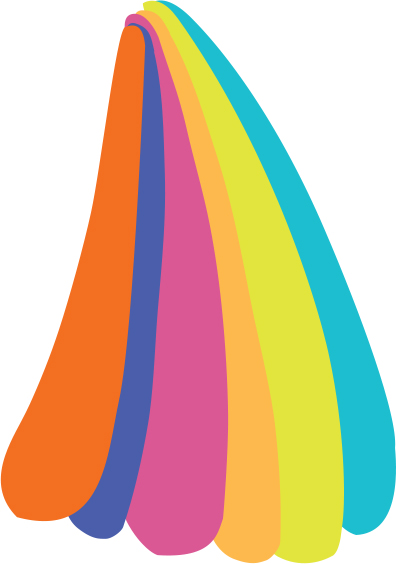
COMPLEMENTARY COLORS
These consist of any two colors which are directly opposite each other on the color wheel.
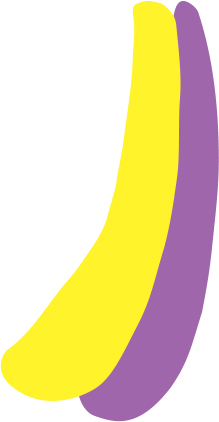
SPLIT-COMPLEMENTARY COLORS
These consist of any color on the wheel plus the two that flank its complement.

ANALAGOUS COLORS
These consist of any two to four colors which are side by side on the color wheel.




